3.4 Applying Csikszentmihalyi's psychology of flow
Recap
In the previous section, “How to move from focus sessions to flow sessions,” I explained that while 90-minute focus sessions led to a significant productivity boost in my writing projects, focusing my attention for that amount of time on a single task was exhausting and demotivating. I then turned to the theory of flow by Csikszentmihalyi to make these focus sessions more enjoyable.
Flow refers to a mental state that comes when you get into the zone, completely engrossed in a task, such that time disappears and all outside stimuli fade away. More importantly, flow states please us because, as they elicit our full array of skills at a complex task, the activity orders our consciousness, Csikszentmihalyi says. The feeling of all cylinders firing in unison, harmoniously directed at the task, puts us in the present. In this state, we’re not fretting about random worries and concerns. We’re fully focused on the activity, and our brain likes this state.
Flow as the foundation of happiness
As a researcher whose primary concern is happiness (not productivity), Csikszentmihalyi believes that unless we absorb our minds in an engrossing activity, our mental state trends toward psychic entropy (random, diffuse thinking). Csikszentmihalyi says, “Each person allocates his or her limited attention either by focusing it intentionally like a beam of energy… or by diffusing it in desultory, random movements” (33). States of idleness that don’t focus our psychic entropy become moments of rabbit-hole thinking, full of worry, regret, anxiety, and cyclical thinking. Csikszentmihalyi explains:
In normal everyday existence, we are the prey of thoughts and worries intruding unwanted in consciousness. Because most jobs, and home life in general, lack the pressing demands of flow experiences, concentration is rarely so intense that preoccupations and anxieties can be automatically ruled out. Consequently the ordinary state of mind involves unexpected and frequent episodes of entropy interfering with the smooth run of psychic energy. This is one reason why flow improves the quality of experience: the clearly structured demands of the activity impose order, and exclude the interference of disorder in consciousness (58).
In other words, flow counters the naturally occurring entropy in our conscious minds. Without any activity to focus our attention, our natural mental state is one of entropy—in other words, randomness, disorder, unstructured thinking, and worry, says Csikszentmihalyi.
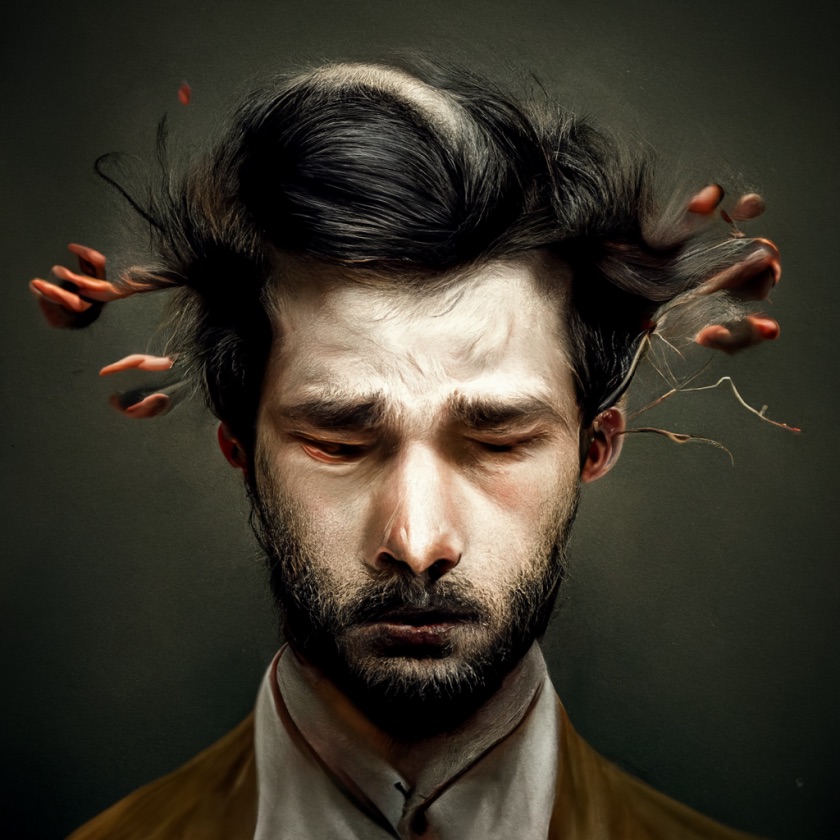
Csikszentmihalyi says people tend to experience their most negative experiences when alone, in part because their minds are more free to wander in random, unfocused ways. For those enduring long-term solitude, the time to be alone with their thoughts can be agonizing:
Why is solitude such a negative experience? The bottom-line answer is that keeping order in the mind from within is very difficult. We need external goals, constant stimulation, and feedback to keep our attention directed. And when external input is lacking, attention begins to wander, and thoughts become chaotic—resulting in the state we have called “psychic entropy” in chapter 2. (168-69)
As you sustain focus on a complex activity that consumes your full attention and skills, this focused state organizes the “psychic energy” of your mind in pleasing ways. One reason we find flow-producing activities so rewarding is because they give order (psychic negentropy) to what otherwise tend to be fickle, flighty thoughts (psychic entropy).
Although other authors like Cal Newport praised moments of mental wandering (disconnected from social media), and even argued that this freeform thinking leads people to make unexpected connections or realizations, I found it hard to sustain freeform thinking in productive ways.
Csikszentmihalyi is so enamored with flow that he explores its application in seemingly every aspect of life, from hobbies to careers to family and more. But my interests here will focus on writing technical documentation and flow.
This is an odd combination because most people associate flow with fiction writing, not technical documentation. Csikszentmihalyi demonstrates time and again that the activity itself is irrelevant; from factory workers to mountain climbers, people can find flow in whatever they’re doing. (Csikszentmihalyi specifically addresses the challenge of a worker performing a boring job in the chapter “Work as Flow,” p. 144).
I wasn’t so concerned about the merits of Csikszentmihalyi’s theory of psychology and happiness. In many ways, it suggested our consciousness was more of a train wreck than a marvel, which was an idea I was still processing. I was more interested in whether I could incorporate the dynamics of flow into everyday documentation-writing projects to transform them from dullness to enjoyment.
Conditions that cause flow
Csikszentmihalyi identified eight traits that form common patterns when people are in flow. I’ll explain the most salient, applicable traits and relate them to writing documentation.
Summarizing these traits, Csikszentmihalyi explains:
First, the experience usually occurs when we confront tasks we have a chance of completing. Second, we must be able to concentrate on what we are doing. Third and fourth, the concentration is usually possible because the task undertaken has clear goals and provides immediate feedback. Fifth, one acts with a deep but effortless involvement that removes from awareness the worries and frustrations of everyday life. Sixth, enjoyable experiences allow people to exercise a sense of control over their actions. Seventh, concern for the self disappears, yet paradoxically the sense of self emerges stronger after the flow experience is over. Finally, the sense of the duration of time is altered; hours pass by in minutes, and minutes can stretch out to seem like hours. The combination of all these elements causes a sense of deep enjoyment that is so rewarding people feel that expanding a great deal of energy is worthwhile simply to be able to feel it (49).
There’s a lot to unpack there, and Csikszentmihalyi elaborates on these traits throughout his book. They are never outlined in any clear-cut formula to follow, as I believe life is too messy for that. But let’s go through the main traits below and discuss how they apply to a profession. In this case, I’ll specifically apply them to technical writing because it’s what I do, but they could likely be applied to many other professions and activities. The following sections cover skills balance, effortlessness, goals, feedback, and concentration.
Skills balance
This first trait involves striking a balance between tasks that aren’t too hard or easy for your skillset. If it’s too hard, the activity produces anxiety, which removes your flow. If it’s too easy, it doesn’t engage you enough and you become bored. You have to strike a balance between anxiety and boredom such that the activity proves a good match for your skills.
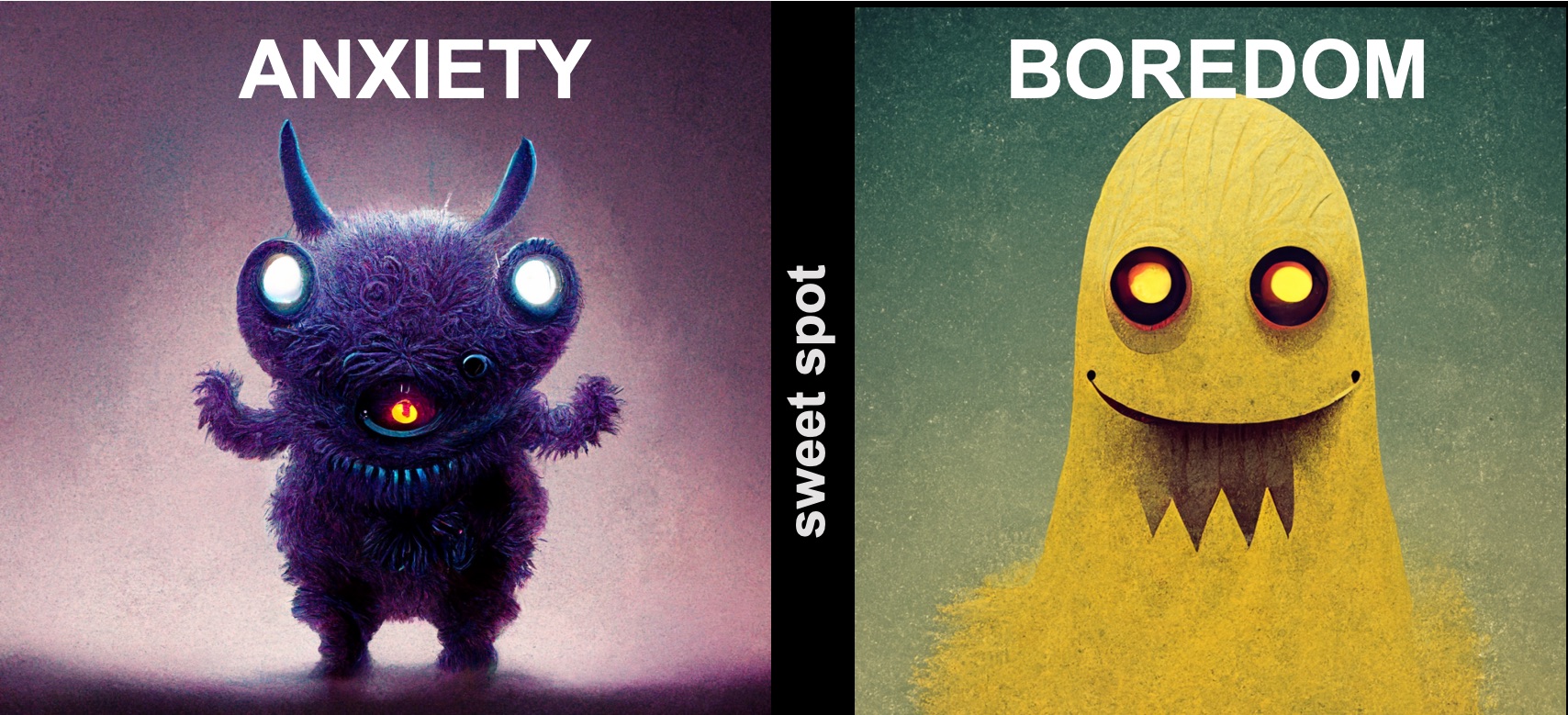
Csikszentmihalyi says, “Enjoyment appears at the boundary between boredom and anxiety, when the challenges are just balanced with the person’s capacity to act” (52). This balance is common sense: To enjoy almost any game (chess, basketball, tennis), you need people roughly your same level of skill.
In writing documentation, sometimes the information we’re asked to produce is beyond our understanding—given that we’re usually generalists, not specialists. As we struggle to understand terms, techniques, and other approaches, the task can induce the anxiety Csikszentmihalyi talks about. Trying to explain to a Java engineer how to do an advanced task when you don’t understand Java is like telling someone to give directions in Japanese when you only speak English—good luck.
On the flip side, if your task just involves publishing content that engineers write, maybe cleaning up the grammar a bit and incorporating Markdown syntax as you publish it on the site, this task will likely create boredom. Publishing tasks are usually easy (or they should be, ideally, once systems are in place). The other day I had to publish a long document on a site, and I admit I had to open a Mariners game in another window because I found the task too boring. It didn’t engage my mind like writing raw content does. Finding grammar errors in sentences is also trivial, if you have a strong command of the language.
Finding a balance between anxiety and boredom is key to flow states. It’s why I think the high-level overview (a topic I’ve explored in my series on Trends to follow or forget, idbwrtng.com/trendsseriesintro) provides an excellent focus for tech writers. The high-level overview provides enough attention to conceptual documentation to move it away from simple formatting or publishing. You’re writing. You have to articulate complex concepts in readable, understandable ways.
At the same time, the focus on the high-level means you won’t get into the nitty-gritty details of code samples, authorization protocols, parameter data types, or other granular details. This won’t be like writing reference documentation for a Javadoc, where you have to chase down field descriptions for each class and what data gets returned for the methods, and so on.
Effortlessness
Another trait of flow Csikszentmihalyi talks about is effortlessness. When you’re in a state of writing flow, your mind pours words onto the page in effortless ways, as if a muse is speaking to you. Compare the experience to an ice skater who glides effortlessly along the ice, almost like the wind moving across the landscape.

The effortless and apparent ease may actually be a mirage. Csikszentmihalyi says:
Although the flow experience appears to be effortless, it is far from being so. It often requires strenuous physical exertion, or highly disciplined mental activity. It does not happen without the application of skilled performance. Any lapse in concentration will erase it. (54)
Writing tends to be a strenuous activity for most people, requiring “disciplined mental activity.” Few can sustain writing modes for more than a few hours a day. No matter what you’re writing, filling a blank page is frustrating. Especially when you’re writing documentation, chances are you’re thinking about things so complicated that you can barely keep your head above water. You might be drowning in acronyms, catching glimpses of understanding every now and then. Writing documentation differs from the creative writer who inhabits a character’s mind and allows character-driven empathy to direct the flow of content.
Most tech writers will struggle with effortlessness and will not enter states of flow. You can’t force your mind to articulate an understanding you lack. That attempt to clarify confusion might only result in mental anguish (and the desire to switch to easier tasks, like interacting on Slack). You might not know what to say because the topic is too complex and unfamiliar to you in the first place. This is why writing is difficult.
But it doesn’t have to be. With the right technique, you can get past these hurdles and enter the flow state Csikszentmihalyi describes. As I was writing a longer documentation narrative the other week, which I described in “Attempting to write a Life of a [something] narrative” (idbwrtng.com/trends-writinglifeofasomething), I noticed a pattern that emerged that made writing almost effortless.
I was writing about a subject outside my stewardship. As such, I had to read widely and try to gather details about topics I knew little about. My approach involved alternating between reading and writing modes. More specifically, I would read product design documents and other information about a topic, copying and pasting from the material I read whenever I found relevant nuggets of information.

After I gathered enough information nuggets into a document, I organized them into a logical order (in this case, arranged by steps in a workflow). This phase was the information-gathering phase. Reading leads to information discovery.
After accumulating enough nuggets, I would read through that content and summarize, distill, or otherwise incorporate the information into my own words and narrative. In other words, I transitioned into writing. If the information nugget didn’t need to be paraphrased or summarized, no problem, I could just weave it into the content as is (because the content all belongs to the company anyway). But usually, I had to identify a key point in a larger paragraph and paraphrase the idea in my own words. I would also stitch it together with the other nuggets in that section until the content fit seamlessly.
After running out of details, I would revert to the information-gathering phase again (usually reading), in which I would uncover yet more details (finding more nuggets). After weaving the newly discovered information into various sections of my draft (wherever the gaps were), I would return to my writing mode and smooth the information in, like a builder might smooth large rocks into a concrete wall through masonry. I continued alternating between reading and writing until I felt I had enough detail in my document.
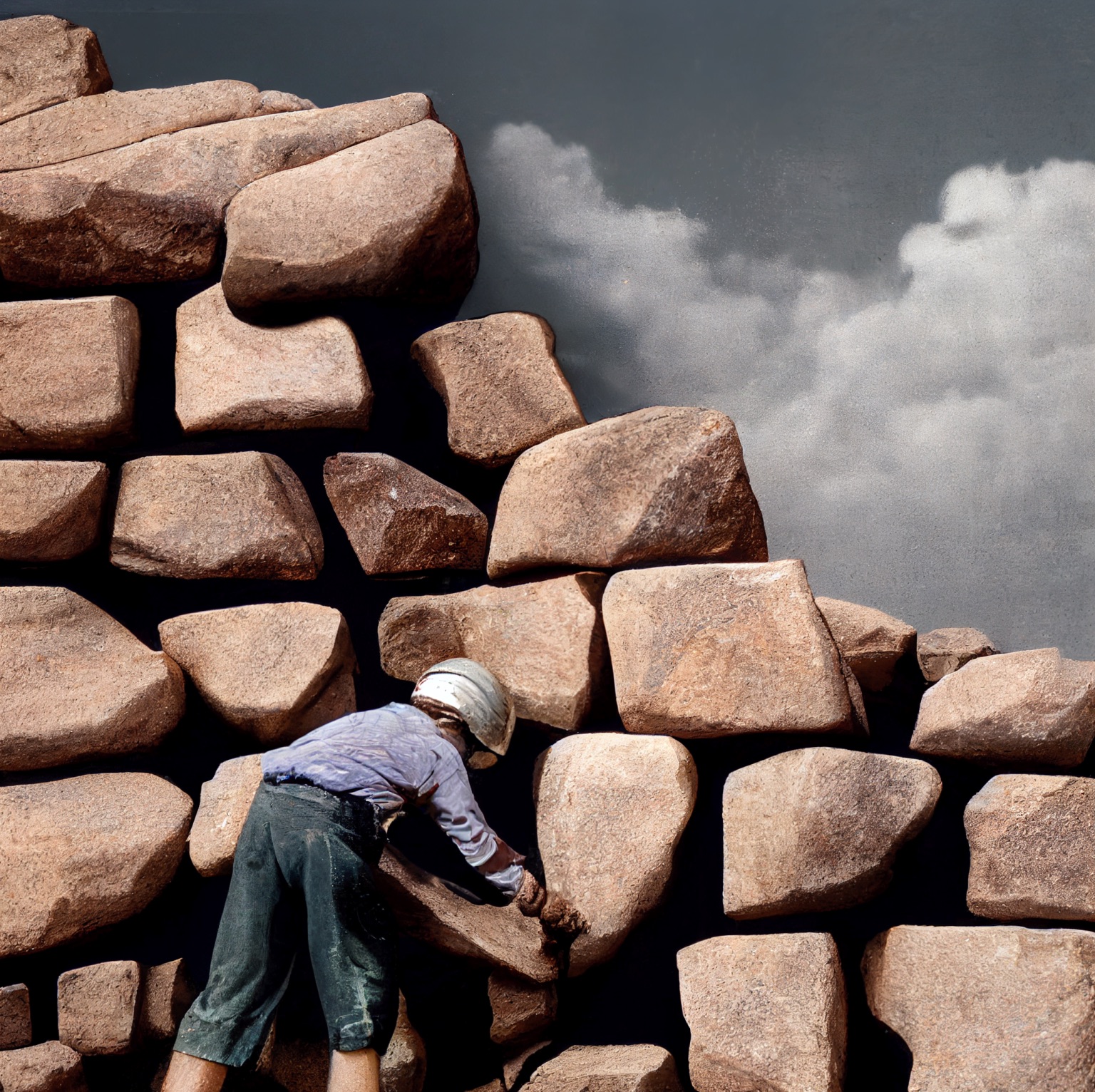
I realized that I had followed the same pattern on my blog. I had written two main essay series that year—“Trends to follow or forget” (idbwrtng.com/trendsseriesintro) and this series, “Journey away from smartphones”—following a similar pattern. Both series had 15+ posts. When I ran out of things to say, I read another book or article about the topic, and it filled me with more ideas and thoughts. I began quoting these authors and responding to their arguments and experiences. In other words, I started conversations with authors.
This technique isn’t revelatory. Even Csikszentmihalyi notes, “As in all other branches of learning, the first step after deciding what area one wants to pursue is to learn what others have thought about the matter” (139). But I didn’t realize how significant reading was to the writing process until I began these essays. Essentially, writing is just a conversation with the authors you’re reading. As such, reading and writing go hand in hand. Reading leads you to discover new information, and writing is your way of responding to that information. It’s like a see-saw—read a bit, then write, then read some more, then write. The two activities feed off each other. And in the books I read, it’s clear that the authors themselves are having conversations with the sources they’re reading. Writing is thus a conversation about a conversation.
It’s not that simple, of course. There are times when information isn’t available for reading. In that case, you might have to gather information by interviewing engineers and product managers. And you might discover other information through experimentation with the product. But the majority of the information comes from reading.
Seeing this pattern in my content generation process, even for the technical documentation I was writing, made my focus sessions less strenuous. I no longer felt like I was banging my head against a blank wall. If I didn’t have content, I would look for material to read, copying and pasting highlights as I ran across them. Then from these nuggets, I would add them to my existing draft and keep working. If I ran out of content, I just needed to read more.
Understanding the balance between reading and writing helped transform focus sessions from a slog to a journey. Part of the struggle with writing is trying to explain something we ourselves don’t fully understand. As we tax our brains to articulate an idea, process, or description that we can’t fully grasp ourselves, this puts our mental wheels into overdrive. Crystallizing the words in our minds into coherent, organized explanations is difficult. But balancing this activity with reading reduced the strain. It seemed effortless.
Goals
Another point Csikszentmihalyi mentions as a trait of flow is goals: “To be able to experience flow, one must have clear goals to strive for” (209). On the surface, goals might seem like just another box checked with documentation-writing. Working facilitates the achievement of goals criteria more easily than when we are at home and have free time. Not only do we have tickets in issue tracking systems that establish the work (providing a “goal”), but managers usually require us to formulate goals we’re working to achieve (for example, OKRs).
However, trying to complete a ticket or achieve my OKRs wasn’t likely to get me into flow. I’d never met anyone who enjoyed corporate goal planning and reporting. Instead, try focusing on goals related to your immediate activity: writing.
Writing can unlock understanding of a complex topic. When I’m writing documentation about something, at the start of the project, my understanding is minimal. Much of the product confuses me. But at some point, a light bulb comes on and I suddenly get it. I get the point of the API, or I finally make it work, or something else clicks. Compare this with the sense of discovery you experience when you write a more creative essay or post. Good writing usually yields surprising realizations during the writing process. (If you think about it, a good story almost invariably involves the main character changing through some realization or epiphany.)
Csikszentmihalyi says that information discovery often becomes the goal of writing that leads to enjoyment of the task. Writing is not about typing out what you already know but about discovering what you don’t know:
In today’s world we have come to neglect the habit of writing because so many other media of communication have taken its place. Telephones and tape recorders, computers and fax machines are more efficient in conveying news. If the only point to writing were to transmit information, then it would deserve to become obsolete. But the point of writing is to create information, not simply to pass it along. In the past, educated persons used journals and personal correspondence to put their experiences into words, which allowed them to reflect on what had happened during the day. The prodigiously detailed letters so many Victorians wrote are an example of how people created patterns of order out of the mainly random events impinging on their consciousness. The kind of material we write in diaries and letters does not exist before it is written down. It is the slow, organically growing process of thought involved in writing that lets the ideas emerge in the first place. (131)
In other words, if you’re writing a letter or essay, much of the enjoyment comes from discovering some new realization or thought about the topics or events. It’s no fun regurgitating what you already know. A thoughtful post leads you to discover new ideas. That’s always been what captivated me about blogging, and why I feel I will never run out of ideas. When I’m writing a blog post, I’m exploring unfamiliar territory, curious to see what I will find.
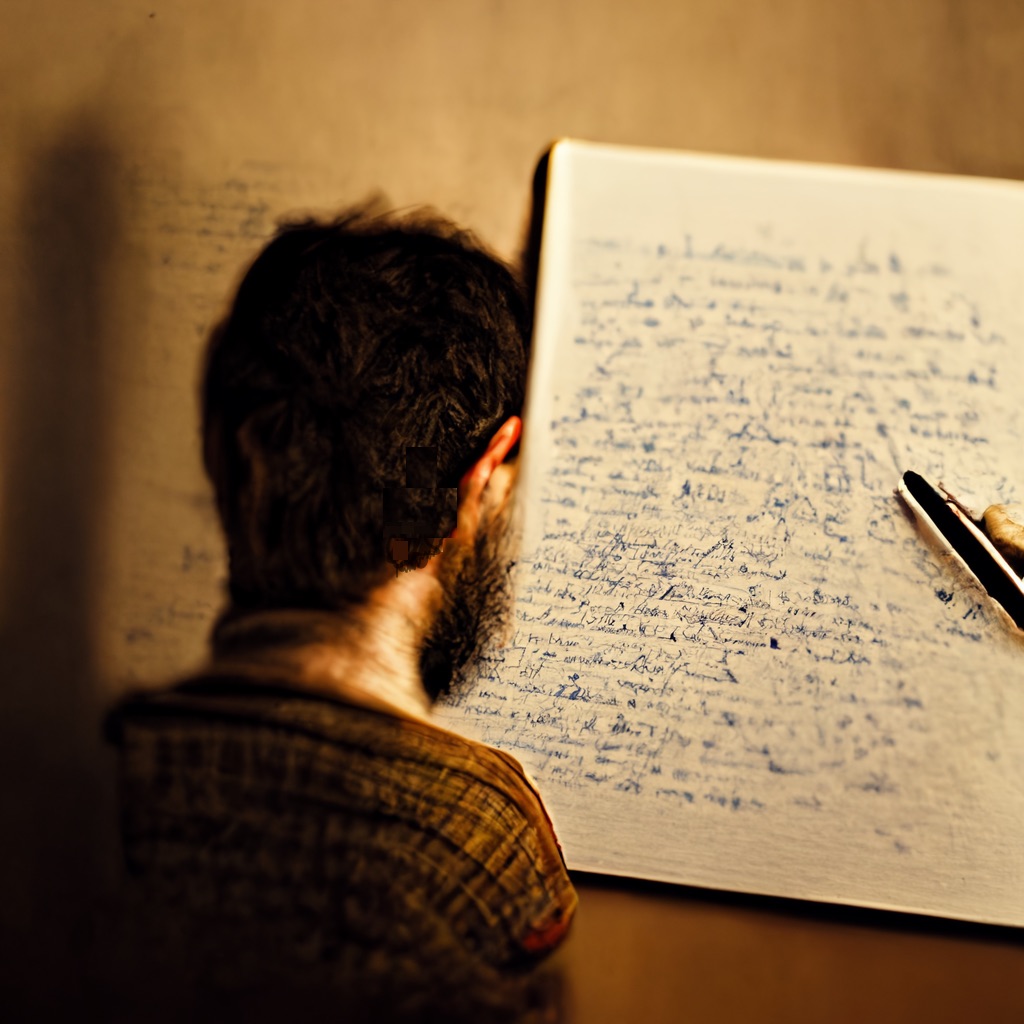
Feedback
Another trait correlated with flow states is feedback. Csikszentmihalyi says, “… receiving clear feedback [is] a condition for enjoying whatever they were doing” (58). Csikszentmihalyi provides the example of a surgeon performing an operation and knowing immediately whether he or she is successful (such as by assessing whether blood flows into the cavity). Unfortunately, writing doesn’t provide immediate feedback from an external reader. You’re still drafting and shaping the content for many days before sending it to others to review.
However, writing can provide feedback as you examine what you’ve written. Maybe you read over a draft and see that it’s taking shape and starting to feel like an interesting piece. Or maybe you read it and decide it’s confusing and scattered. You could even use a rubric to score your draft against various criteria. Consider the analogy to shaping clay on a pottery wheel: as the artist sees the previously formless clay taking on the shape of a pot, that developing shape provides feedback to the artist about their work.

I’m usually pleased when I read drafts of my work. I see that I’ve created something from nothing. Where there was previously a blank page, now there is a body of knowledge, a story, or some other interesting form. Just because you’re the reader, it doesn’t mean you’re not receiving feedback as you read the draft. The most engaging feedback comes from reading your own content.
Concentration
Another trait of flow is concentration. Csikszentmihalyi says, “After choosing a system of action, a person with an autotelic personality grows deeply involved with whatever he is doing…. he invests attention in the task at hand” (210). I’ve spent many posts in this series already arguing for concentration modes. Turning off email, chat notifications, and other disruptions helps you maintain context and velocity in the task.

In contrast, if you’re constantly distracted (by colleagues, social media, or news sites), you probably won’t get into a flow state.
Tuning out all disruptions is easier to say than to do, especially in a busy office environment where you’re always connected. So how can you do it? One technique Csikszentmihalyi says is to pay close attention to the details of your activity. He writes:
The traits that mark an autotelic personality [one who enjoys the activity for itself] are most clearly revealed by people who seem to enjoy situations that ordinary persons would find unbearable…. First, they paid close attention to the most minute details of their environment, discovering in it hidden opportunities for action that matched what little they were capable of doing, given the circumstances.” (90)
By focusing on minute details, our concentration deepens. Close observation is something you can do with almost any task. For example, the other week I rode my bike through the same 5-mile downtown Seattle stretch that I’ve ridden for nearly a year. But this time, I tried to notice 20 things that I’ve never noticed before. It didn’t take long before I reached 20, and in the process I was engrossed in the ride, not even listening to a podcast. I couldn’t believe all the things I’d been casually passing by. For example, I decided to take a closer look at a hole in the fence. When I peered through the hole, I realized the construction pit was so massive, the workers resembled ants at the bottom.
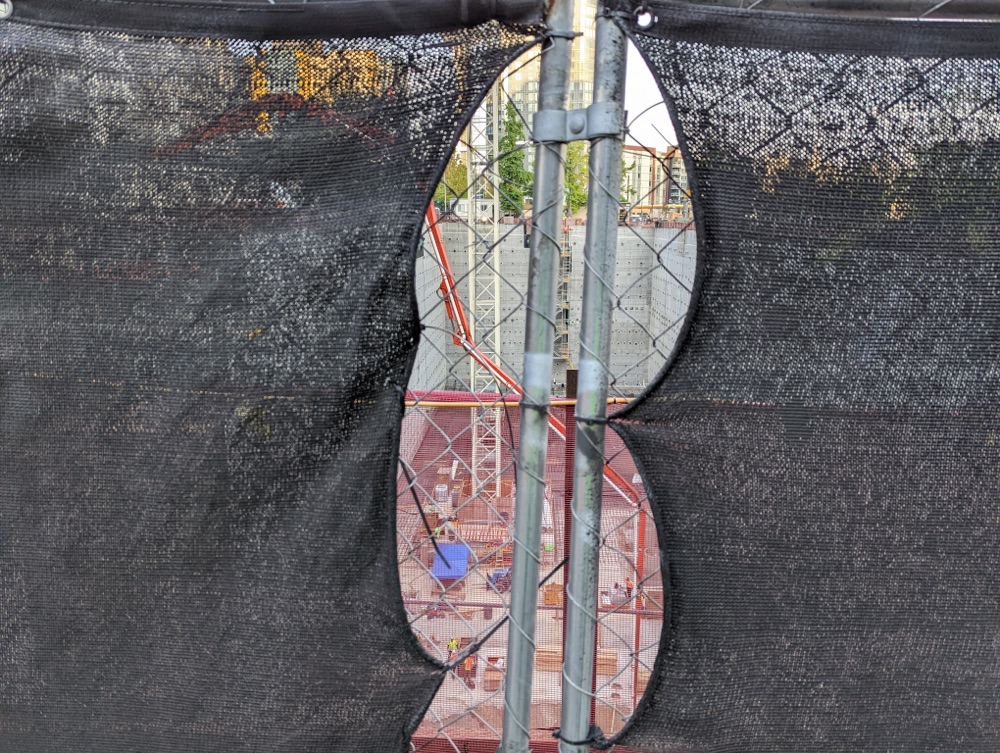
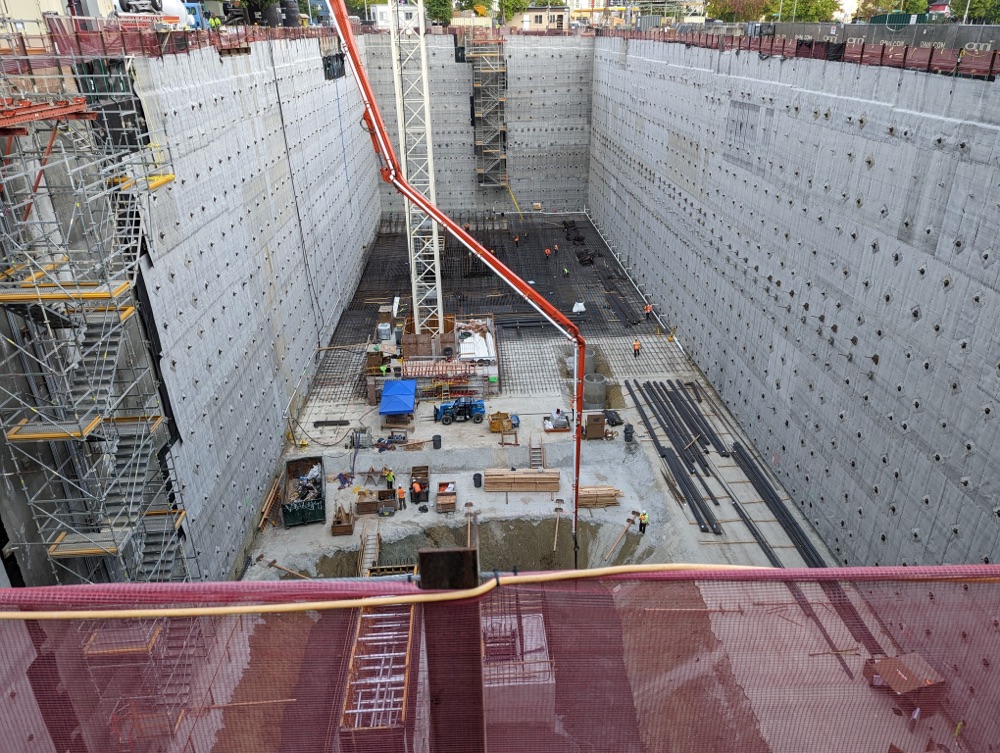
When you write, you may pay closer attention to words. Csikszentmihalyi says that word play and investigation can be a source of enjoyment that leads to flow. By examining the word choice in your sentences, maybe looking up words and finding more precise diction, this will pull you deeper into the task.
The effort to concentrate for extended periods of time on a topic depends more on our ability to re-order our consciousness. If we’ve built a habit of TV-watching, smartphone addiction, and other ways of using external stimuli to order our conscious mind, our concentration muscles are probably weak and need more training. Csikszentmihalyi says:
People without an internalized symbolic system can all too easily become captives of the media. They are easily manipulated…. If we have become dependent on television…., it is because we have so little to fall back on, it is because we have so little to fall back on, so few internal rules to keep our mind from being taken over by those who claim to have the answers. Without the capacity to provide its own information, the mind drifts into randomness. It is within each person’s power to decide whether its order will be restored from the outside, in ways over which we have no control, or whether the order will be the result of an internal pattern that grows organically from our skills and knowledge. (128)
Csikszentmihalyi’s point here gets into a larger topic, that of developing your mind in such a way that you can control your thinking and consciousness. Focusing on a topic without wandering into randomness is hard. Controlling conscious thought is more closely related to meditation and yoga.
In a previous section, I mentioned that after getting rid of my smartphone, I substituted TV for it. I wondered why I seemed drawn to distraction. Csikszentmihalyi’s answer is that TV alleviates our psychic entropy. TV helps produce an ordered consciousness, taking us away from the worries and anxieties of our own lives. Csikszentmihalyi writes:
Worries about one’s love life, health, investments, family, and job are always hovering at the periphery of attention, waiting until there is nothing pressing that demands concentration. As soon as the mind is ready to relax, zap! the potential problems that were waiting in the wings take over.
It is for this reason that television provides such a boon for many. Although watching TV is far from being a positive experience—generally people report feeling passive, weak, irritable, and sad when doing it—at least the flickering screen brings a certain amount of order to consciousness. The predictable plots, familiar characters, and even redundant commercials provide a reassuring pattern of stimulation. The screen invites attention to itself as a manageable, restricted aspect of the environment. While interacting with television, the mind is protected from personal worries. The information passing through the screen keeps unpleasant concerns out of the mind. (169)
When you attempt to concentrate on a task, to look for distractions, whether from the TV or smartphone or light tasks. The urge comes from the psychic entropy that flitters about in our heads. Csikszentmihalyi calls this “the dark side of the emergence of consciousness” (227).
As thinking, reflective humans, we tend to celebrate our consciousness and fear the day robots turn sentient. But Csikszentmihalyi presents the flip side of consciousness:
The forms of psychic entropy that currently cause us so much anguish—unfulfilled wants, dashed expectations, loneliness, frustration, anxiety, guilt—are all likely to have been recent invaders of the mind. They are by-products of the tremendous increase in complexity of the cerebral cortex and of the symbolic enrichment to culture (227).
It is this dark side of consciousness that the state of flow counteracts. When you’re in a state of flow, you aren’t thinking about your “unfulfilled wants, dashed expectations, loneliness, frustration, anxiety, guilt.”
If I have any criticism of Csikszentmihalyi’s arguments, I think he doesn’t give enough attention to dealing with the underlying issues. There might be merit to addressing serious issues head-on. Engaging with the issues might reduce their power to overtake your mind and distract you from efforts to flow. Some disruptions can be so powerful that you can’t ignore them—and probably shouldn’t.
For example, suppose you have baggage from childhood that continually encroaches on your thoughts, making it difficult to concentrate without moving back to the issue. Surely dealing with the issue, perhaps through therapy, would help you concentrate. The smallest of issues can be distracting. At Amazon, I once disagreed with a product manager (PM) about a documentation-related issue, specifically the degree of transparency around the product’s obvious limitations. As I biked to and from work, my mind couldn’t stop dwelling on the topic. Even as I tried to listen to podcasts or audiobooks, I couldn’t stay focused because I kept thinking about the issue.
Rather than forget about the issue, I could have set up a meeting with the product manager to hash out the issue with pros and cons. But I could have also explored why transparency was so meaningful to me, what personal experiences made this quality so essential. Rather than directly dealing with the topic, the issue slowly fizzled. Then the product flopped anyway and became a non-issue.
Perhaps one way to deal with these urges toward distraction is to write the thoughts down on paper as they come to you. Once on paper, you can approach them more strategically. When you’re done with your focus session, figure out how to address the issues. Make a plan. For example, if you’re worried about how your teenage child will transition to college, write down all the steps to be completed and work towards completing them. This will likely put your mind at ease about the subject and increase your concentration.
Other flow traits
There are a few more traits of flow I haven’t covered here—time distortion, the feeling of control, and a disappearing concern for the self. However, these are more the consequences of flow rather than the conditions leading to it, so I’ll omit discussing them here.
Conclusion
As I experimented with flow techniques, I found my focus sessions more enjoyable and durable. At times, time passed without me noticing. But flow wasn’t achievable overnight. It might take many months and potentially years of practice to get to more immersive states of flow, just like yoga and meditation. One doesn’t become a yoga guru overnight.

About Tom Johnson

I'm an API technical writer based in the Seattle area. On this blog, I write about topics related to technical writing and communication — such as software documentation, API documentation, AI, information architecture, content strategy, writing processes, plain language, tech comm careers, and more. Check out my API documentation course if you're looking for more info about documenting APIs. Or see my posts on AI and AI course section for more on the latest in AI and tech comm.
If you're a technical writer and want to keep on top of the latest trends in the tech comm, be sure to subscribe to email updates below. You can also learn more about me or contact me. Finally, note that the opinions I express on my blog are my own points of view, not that of my employer.

